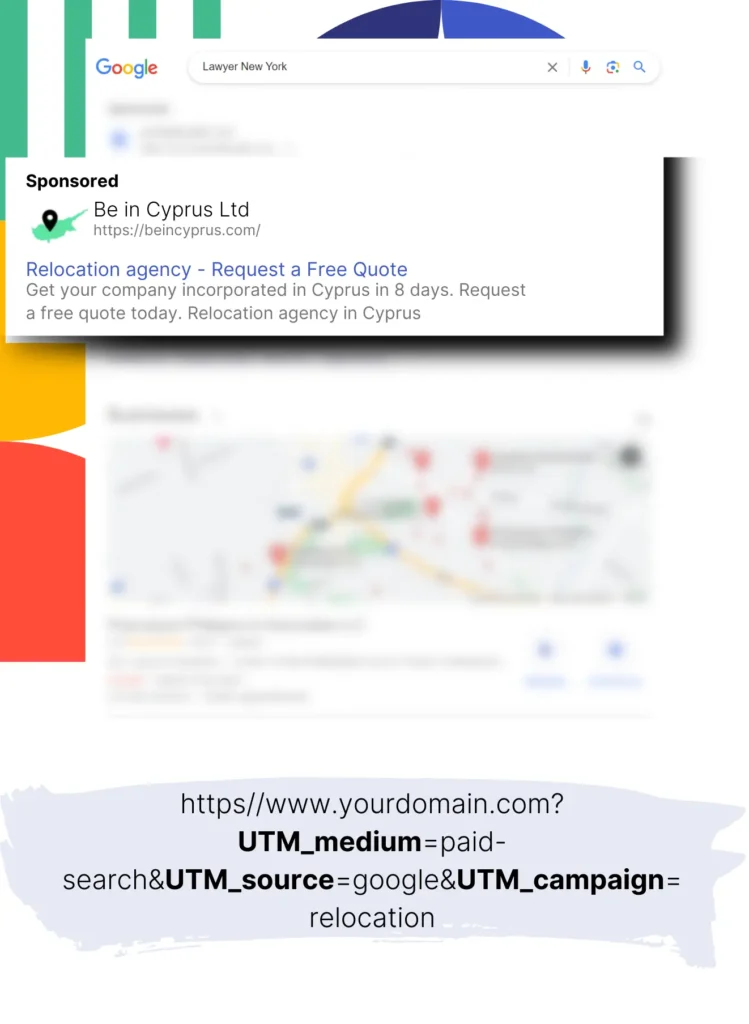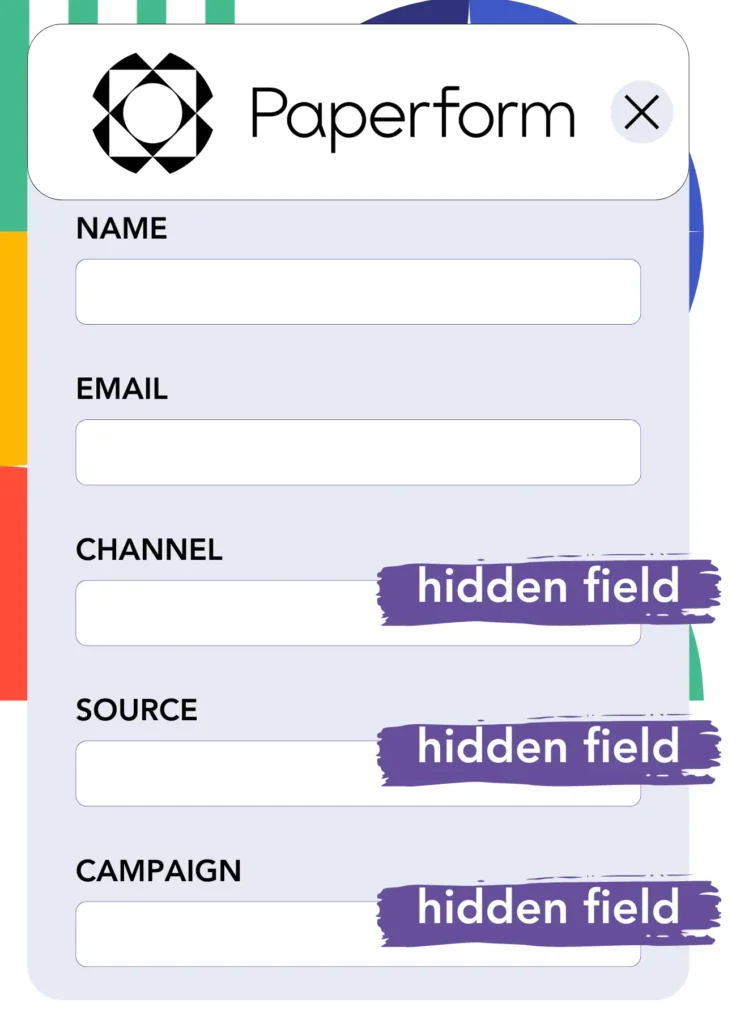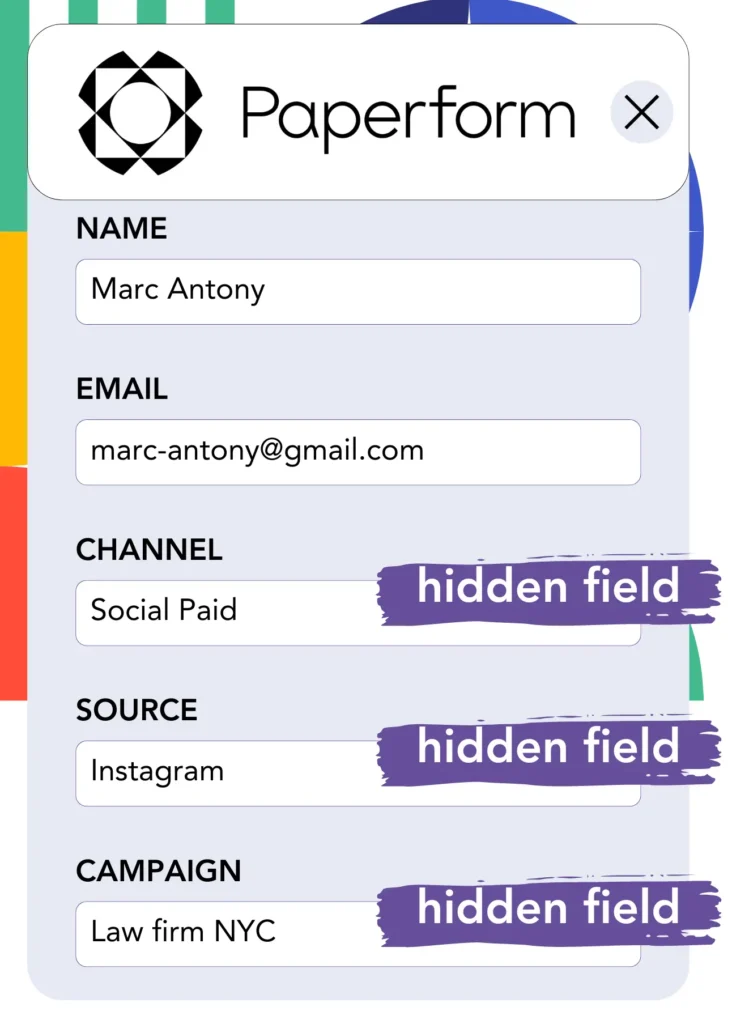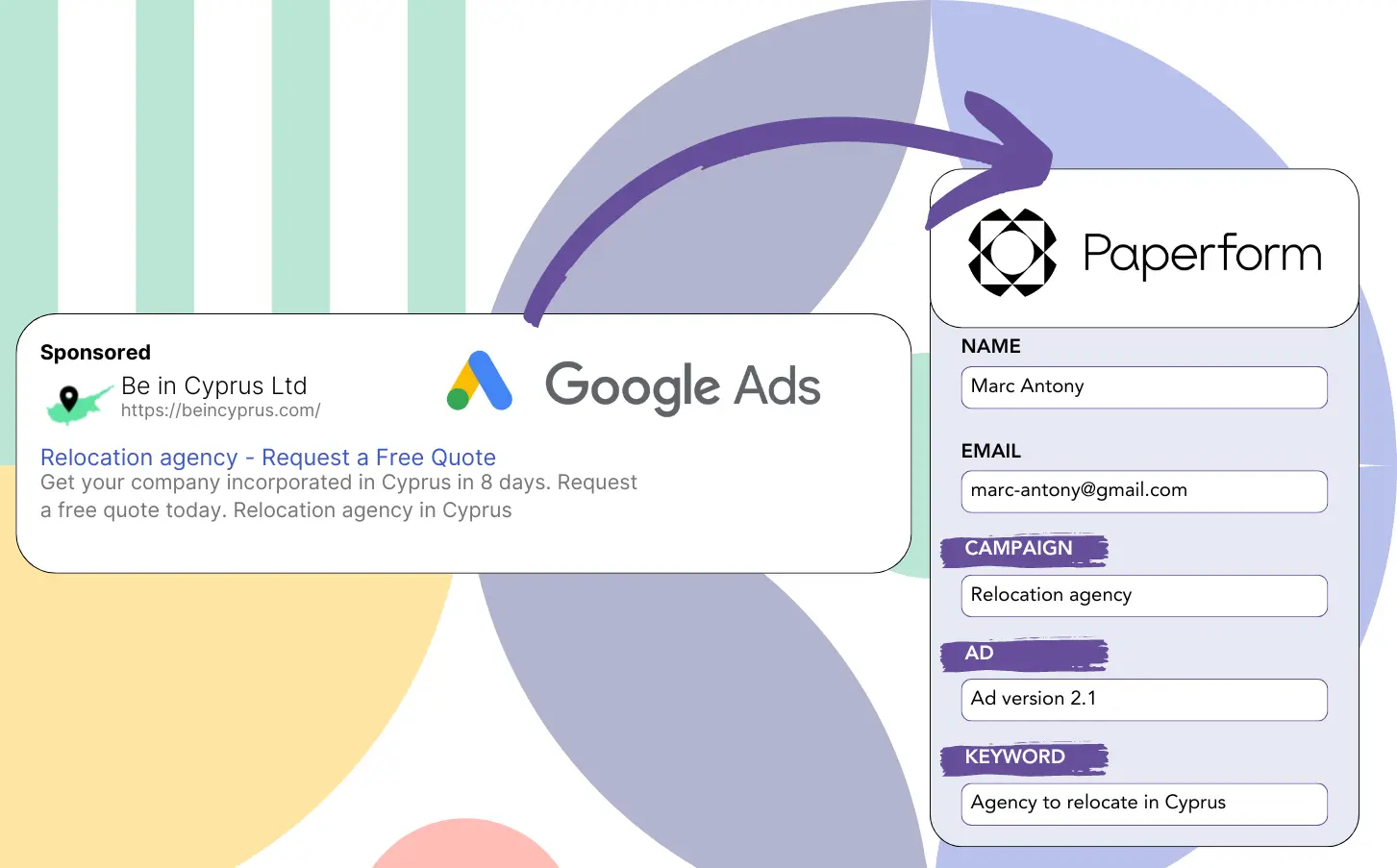Are you using Google Ads to generate leads but unsure which campaigns are producing them?
This issue is common: Google Ads shows lead totals by campaign, ad, or keyword, but lacks lead-level data.
Consequently, you cannot determine which campaign, ad, or keyword produced the leads that converted into customers.
Leadsources addresses this issue.
With Leadsources, you can now track your Google Ads data by campaign, ad, and keyword at the lead level.
You can store Google Ads data for each lead generated in Paperform, including campaign, ad, and keyword details.
You can then generate reports like “Keywords that generated the most leads” and decide which keywords to promote or cancel.
Let’s get started!
Capture Google Ads lead data in Paperform in 4 steps
Step 1: Add Leadsources in the head tag of your website

Sign up to Leadsources.io, and benefit from our 14-day free trial.
Insert the Leadsources code in your website’s head tag — no coding knowledge is needed.
Simply follow this easy step-by-step guide.
Step 2: Add the UTM parameters to your Google Ads campaigns

Add the UTM parameters you wish to track to all your Google Ads campaigns.
Here are examples of UTM parameters you can include in your ad:
- UTM_source
- UTM_campaign
- UTM_term
- UTM_content
Leadsources also gathers additional data not covered by UTM parameters, such as channel, landing page, and landing page subfolder, providing a complete view at the lead level.
Step 3: Add the hidden fields in Paperform

When visitors complete your Paperform (name, email, etc.), Leadsources automatically populates the hidden fields with Google Ads data (campaign, ad, keyword, landing page, etc.).
To achieve this, refer to the step-by-step guide for adding hidden fields in Paperform.
Leadsources will then directly store the Google Ads data in your Paperform.
Step 4: Capture the Google Ads data in Paperform

When a visitor clicks your Google Ads ad and arrives on your page, Leadsources captures the Google Ads data (campaign, ad, keyword, landing page, etc.).
Leadsources automatically adds the Google Ads data to the hidden fields in your Paperform.
After form submission, Google Ads data and form responses are sent to the Paperform submissions page.
How does Leadsources work?
By placing the Leadsources code in the head tag of your website, it will capture Google Ads data (UTM parameters and referrer) every time someone visits.
It then saves the Google Ads data in the hidden fields of your Paperform.
If a visitor arrives at your site without UTM parameters, Leadsources will still gather data through the referrer:
- Channel
- Source
- Campaign
- Landing page
- Landing page subfolder
This approach allows you to track crucial lead source information even when UTM parameters are absent, including:
- On Google Search
- On your Instagram bio link
- On your social media posts
- Etc.
Most tools only track lead data when UTM parameters are present, typically for paid and referral channels, this is a limitation.
Leadsources, on the other hand, captures lead data across all channels, even if UTM parameters are missing:
- Organic Search
- Paid Search
- Organic Social
- Paid Social
- Referral
- Affiliate
- Display Advertising
- Direct Traffic
This enables you to gather and consolidate all lead source data in one central location.
How to run performance reports
With Google Ads data stored in Paperform, you can now generate performance reports such as:
- Leads per campaign
- Leads per ad
- Leads per keyword
- Etc.
This allows you to make informed choices about your Google Ads spending.
Let’s review the different reports you can generate.
Lead performance reports
You can generate reports that display the number of leads produced by:
- Channel
- Campaign
- Ad
- Keyword
- Landing page
- Landing page subfolder
Example #1
For campaigns across various channels (SEO, PPC, email, etc.), you can export the data and generate a report titled “Leads by Channel.”

Example #2
After identifying which channel generates the most leads (e.g., Google Ads), you can refine your view by selecting that channel to see the lead count for each ad campaign.

Example #3
After identifying the campaign that generates the most leads, you can further analyze which specific keywords are driving these leads.

Sales performance report
Knowing which ads and keywords generate the most leads is helpful, but do they also boost your revenue?
Sending your Paperform submissions to a CRM allows you to create detailed sales reports.
Example:
| Channels | Search Paid | Social Paid |
| Leads | 50 | 75 |
| Sales | 5 | 6 |
| Average order value | $150 | $100 |
| Revenue | $750 | $600 |
After running ads on Google and Facebook, you discovered that Social Paid ads brought in more leads than Search Paid ads.
After several weeks, you found that the Search Paid channel generated more revenue with fewer leads compared to the Social Paid channel, guiding your decision to increase the budget for Search Paid campaigns.
LeadSources tracks the source of each lead on Paperform, whether they come from ads, organic search, social, email, etc. and syncs that data with each submission. See the full breakdown on the lead source in Paperform page.

